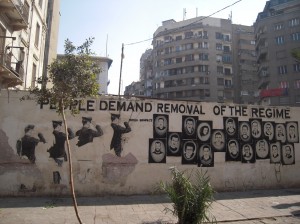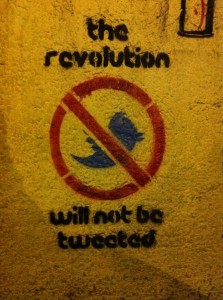The Arab uprisings of 2011 are among those rare events that shake the world and capture our attention because they are largely unexpected and because their significance remains a mystery. Often we get used to everyday situations, and politics can become routine so that we conveniently forget that change is the only constant in global affairs. These revolts, which caught most world leaders off-guard, confirm this view. They became popularized in public debate as the “Arab Spring”, since many outsiders viewed them as refreshing change in a region where it was thought that time had frozen, and hierarchical societies were unchangeable.
 The winter special issue of Regions & Cohesion is entitled “A changing of seasons? The Arab Spring revolts and past uprisings”. We consider this issue’s theme to be truly special because of the extraordinary events that occurred under the umbrella of the Arab Spring. While scientific and political debates surround explanations for and meanings of the historic events that have occurred since the spring of 2011 in the Arab world, the spontaneous and contagious natures of different sociopolitical mobilizations created a people-focused process of regional integration that gave hope to some and alarmed others. Protest was met by repression. In some cases, repression was then met with violence, and what started as democratic and peaceful social mobilization became full-fledged civil war.
The winter special issue of Regions & Cohesion is entitled “A changing of seasons? The Arab Spring revolts and past uprisings”. We consider this issue’s theme to be truly special because of the extraordinary events that occurred under the umbrella of the Arab Spring. While scientific and political debates surround explanations for and meanings of the historic events that have occurred since the spring of 2011 in the Arab world, the spontaneous and contagious natures of different sociopolitical mobilizations created a people-focused process of regional integration that gave hope to some and alarmed others. Protest was met by repression. In some cases, repression was then met with violence, and what started as democratic and peaceful social mobilization became full-fledged civil war.
Debates over the Arab Spring phenomenon have become even more muddled given the persistent political turmoil in Egypt and the protracted Civil War in Syria. Have or will these movements strengthen democracy in the region? Can they improve the quality of life of those citizens living in countries affected by them? No clear answers to these questions have emerged in the fluctuating political scene in the Middle East.
 The articles in this special issue focus on the question of “change” and thus they question whether the Arab Spring truly reflects a “new era” for the region, as many have claimed. The participating authors, all specialists in Middle Eastern studies, consider it important to examine and understand these rebellions, and to analyze what has changed and what remains the same in a pulsatingly active and surprisingly cohesive region. The uprisings were characterized by a degree of spontaneity and versatility but the analysis presented in this issue also allows the reader to understand that the Arab popular movements did not appear ex nihilo, but instead arose from specific traditions. Six of the articles are based on academic research about the Arab uprisings, their historical bases, actors’ means of expression, and how they are viewed externally. Two other articles in the leadership forum are inspired by life experiences within the region.
The articles in this special issue focus on the question of “change” and thus they question whether the Arab Spring truly reflects a “new era” for the region, as many have claimed. The participating authors, all specialists in Middle Eastern studies, consider it important to examine and understand these rebellions, and to analyze what has changed and what remains the same in a pulsatingly active and surprisingly cohesive region. The uprisings were characterized by a degree of spontaneity and versatility but the analysis presented in this issue also allows the reader to understand that the Arab popular movements did not appear ex nihilo, but instead arose from specific traditions. Six of the articles are based on academic research about the Arab uprisings, their historical bases, actors’ means of expression, and how they are viewed externally. Two other articles in the leadership forum are inspired by life experiences within the region.
— Harlan Koff and Carmen Maganda, Editors, Regions & Cohesion
You can read the introduction to the special issue for free on Ingenta here, or purchase the special issue of Regions & Cohesion by clicking here.
For more information about Regions & Cohesion, please visit the journal’s website: http://journals.berghahnbooks.com/reco/.

